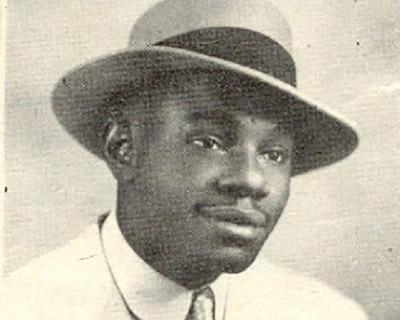Regarding the next edition of the International Jazz Plaza Festival, it is worth proposing to readers a recently published text that rescues one of the musicians who was a protagonist in the creation of Afro-Cuban jazz.
Walking after the legend, trying to find real footholds that reaffirm it; Making visible, beyond the anecdote, the spontaneous genius of a controversial man wherever there are, and documenting the circumstances that made his contribution to Cuban musical culture and jazz possible, are some of the objectives that the philologist and musical researcher proposes. , Rosa Marquetti, in the book Chano Pozo. Life (1915-1948); a biography of the mythical Cuban musician, which was published by Editorial Oriente and can still be found touring the capital’s bookstores.
Luciano Chano Pozo González (Havana, January 7, 1915-New York, December 2, 1948) was a renowned percussionist and composer, known as El Tambor de Cuba ; He is considered a revolutionary among jazz drummers, for introducing into that North American musical genre “a new and vigorous energy,” according to the prominent Cuban ethnologist Fernando Ortiz.
De Chano has stated that Dizzi Gillespie was truly ahead of his time:
The percussionists, the current drummers have not strayed from his style. They still haven’t really moved away from what Chano Pozo was playing. They do some different things, of course, but it was Chano Pozo who laid the fundamental foundations.
The volume is divided into six chapters that cover Chano’s brief but intense life. In the titled “First years (1915-1946)” the author sheds light on “those random and miserable beginnings of her walk through her life, which she received with an unkind welcome”; also her first creations and recordings in Cuba and her incursions into cabaret and cinema.
In the section “RHC Cadena Azul y Amado Trinidad (1941-1946)” his beginnings are recalled precisely on this radio station, where “he found the right environment to freely display all his faculties, ingenuity and interpretative skill, and to be received with complacency for those who ruled there “. In the same way, his working relationship with another great member of the Cuban pentagram, Rita Montaner.
«Nuebayol-Labana-Nuebayol (1946-1947)» is, perhaps, the most attractive of the chapters, since it includes his first forays into the North American city of New York, the meetings with other Cuban musicians already based there, such as Mario Bauzá, Miguelito Valdés, Arsenio Rodríguez, Marcelino Guerra, Rapindey , Machito and his Afro-Cubans, and Olga Guillot, among others.
The pinnacle of Chano Pozo’s brief artistic career is exposed in «¡Ahora sí! (1947)». There the reader will enjoy the great moments that he had to live from his meeting with the famous trumpeter Dizzi Gillespie and his integration into his band. The author recounts that “Chano seduced Gillespie in the best sense and in the way that he best knew how to do it: bringing out some devilish sounds from his inseparable tumbadora and with a performance that was too comprehensive to forget.”
This meeting between the two geniuses “necessarily marked a milestone in the convulsed and original panorama of jazz in North America.” From there, the imbrication of Afro-Cuban elements with the jazz that was made in the United States was definitively established, and that is basically Chano’s contribution to what would later be defined as Latin jazz or Afro-Cuban jazz.
The book narrates, in the same way, the tragic events that would lead to the murder of Chano Pozo, at the hands of the Puerto Rican Eusebio Muñoz, El Cabito , one cold night in December 1948.
Don Fernando Ortiz would also say about Chano: “His grandparents spoke of Chano’s drum, but all of Cuba also spoke, since the musician Chano, who grafted a new and vigorous energy onto North American jazz, was Cuban “one hundred percent”” .
And it is precisely there, in the words of Fernando Ortiz, where the importance of rescuing for new and future generations of Cubans is revealed, the work of those musicians who, like Chano Pozo, contributed and contribute, with it, to keeping alive a musical genre that has transcended time and continues to conquer followers all over the planet.
In the following video, Dizzi Guillespie explains the process of creating the song “Manteca”, a precursor of Afro-Cuban jazz, and how Chano Pozo suggested the entries for each instrument. Unfortunately it is not translated, but it is understood. In the second part of the video you can enjoy the original recording, in 1948, of “Manteca”.
Author: Félix Bolaños / Radio Cadena Habana




